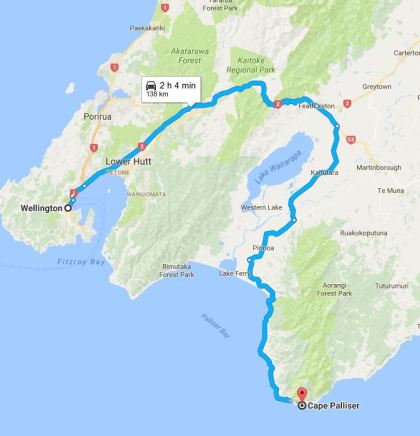The Roadtrip to Castlepoint
Some people like driving – some people hate it. Personally I enjoy getting in a car and just blocking out the world (well, maybe exhibiting a little harmless road rage from time to time) and going to somewhere different. I probably could’ve been a truck driver in fairness!
Castlepoint is about two and a half hours drive from Wellington and is a relatively popular weekend getaway for local Wellingtonians with a reasonably nice beach, some pretty good hiking and good fishing.

Castlepoint Itself
In fairness when I go to photograph I do so mainly for the lighthouse! You can get some good views looking north-east during sunrise, and looking back south-west during sunset. At night, there is a bit of a light display lighting the lighthouse itself up into a number of different colours so you can play around with a bit of light painting without actually having to do anything! One of the joys about this place is that you can climb around the rocks, which are full of fossils, and have quite the explore – but be careful, the waves can surge and the sea here is wild! Don’t get too close to the edge because it can be easy to get swept away (it has happened before) and if you go in the drink, well that’s probably all she wrote. Take a look at some of my images:
The first image above is a sunset image looking back south-west while the second is shot in the middle of the day whilst exploring in and around the rocks. I do also quite like the challenge of trying to defeat the principle of dynamic range so challenge myself to shoot stars with lighthouses around. I was the most succesful at Cape Palliser but also pretty happy with some of the images I have gathered here from time to time:
Of course, it’s not all about the lighthouse here. There are tonnes of landscape opportunities with the beaches, treks and of course the actual ‘Castle’ itself!
Places to Stay
Plenty really – book a bach is very popular here and there is a local campground that I quite liked and that provided very easy access to a swimmable beach (amazingly the water was not too bad temperature wise by New Zealand standards this past summer). The campground provides for powered and unpowered sites, has good cooking and dining facilities and you can also get wee cabins if you don’t wanna put up a tent.
My only real recommendation is take your own food as there isn’t really a decent place to eat in the township itself (there is a local dairy/fish and chip shop which is okay-ish). Otherwise this pub about 5 minutes back from Castlepoint is a nice spot to sink a drink and have a meal! I haven’t stayed there myself but the garden bar is good value!











